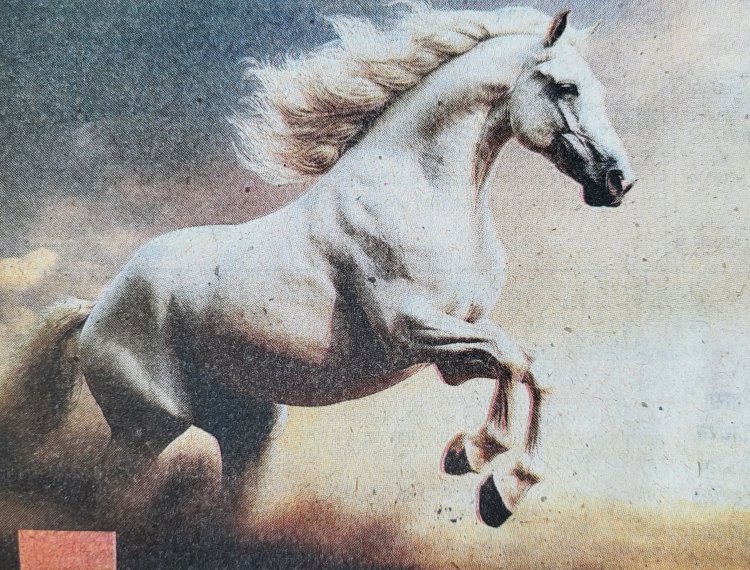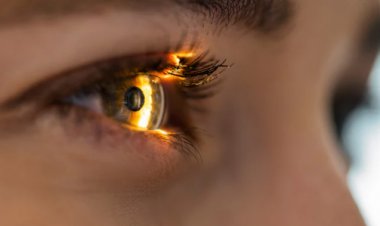Horses and their mysterious world
Trainers like Warwick Schiller have unveiled the unknown world of horse psychology. But a few years ago, a horse named Sherlock became a puzzle for him too. Schiller was stunned when he found out that this horse was behaving exactly the same way as he himself used to behave a few years ago.

Horses are such wonderful creatures. Always ready to fly. Their senses are fully alert. They are awake in turns, i.e. one horse is awake while the other sleeps. They can see almost 360 degrees and can focus on two objects at a time, i.e. they can see one object with each eye. They graze for up to 16 hours a day. The whiskers on their snouts have evolved to distinguish soft grass from rocks. Their skin is so sensitive to touch that they can feel even a fly sitting on their body and can shake their skin to shoo it away. Their sense of smell is almost as sharp as that of a dog.
Horses make friends, shoo flies off each other's faces and scratch their bodies. Humans have a prefrontal cortex, which is used for planning, organizing, setting goals and making decisions, but horses have none. They experience thoughts and emotions without evaluation. Although they can remember a lot, they do not think about what they want in the future, giving them a unique ability to live in the present. Because they fear dying without collective protection, they rely on group coexistence. Since domestication, horses have been in our service for about 5,500 years.
Whether it's participating in war, racing chariots, hunting buffalo, cutting hay, carrying mail, running, leaping and pulling at our command, horses have always been with us. Despite this long and intimate relationship, things don't always go well between horses and humans. Horses can be timid or run away. They can lunge and bite or freeze their feet and refuse to move.
In such moments, frustration for both horse and owner begins to mount, and the risk of injury increases. In such moments, trainers like Warwick Schiller bridge the gap in understanding between humans and horses. Recently, Schiller has changed his technique of training horses. He now approaches the relationship between horse and human in the spirit of cooperation rather than obedience. Where the relationship between the two is less about stopping completely or taking off, and more about building mutual trust and understanding.
The horse that became a puzzle
Everything was going well. But sometimes even trainers face situations in which they feel the need to train. In 2016, a small red horse named Sherlock stood in the Schillers' barn, who was nothing less than a puzzle. He was obedient, but there was no curiosity or sparkle in his eyes. He lacked emotions. His restlessness was visible in his body. Schiller resorted to old training techniques to refine the horse, yet there was no effect on Sherlock. He remained sad. So Schiller did an experiment. He observed the horse in his barn.
When Schiller took a step or two toward Sherlock, Schiller would stop if the horse's ears twitched or his gaze shifted. If Schiller backed off, the horse might sigh or lower its head slightly. When Sherlock turned to look at the chickens chirping in the barn, Schiller would look too. He realized that the horse's signs of stress were more subtle and meaningful than he had previously realized. *Schiller knew he was on the right track, because communication was a key to understanding the horse's ability to communicate.It had begun
The well-known trainer Ray Hunt, who died in 2009, said, 'A horse knows you You know when you know and it also knows when you don't know ' In solving Sherlock's mysteries, Schiller compared Hunt's began to think about the statement differently. He I thought maybe it had something to do with this horse it was more than the knowledge that you were their Are present together.
he says that horses around us set security level Lots of things to do One day he thinking about yourself It came to my mind that in my childhood how his feelings It was pressed saying that boys should cry or be scared It does not look good. That is why Schiller realized that he 'too Sherlock is the same.
Sherlock is the same was behaving as Schiller himself had done for many years To learn something from horses you need to learn to listenSchiller kept listening and Sherlock's attitude improved.went, and his optimism and curiosity blossomed.
Horse and rider becoming one
To sit with his feet on the horse is to experience his magical liveliness. The rider feels the horse's ribs expand. When he sighs, he feels his arms tremble. When he adjusts the reins in his mouth, he feels his tongue push through the reins. There is a great inspiration of life and strength in the warmth and dusty smell they generate and when he moves to walk, his body rolls. The rider can feel the anxiety and buzzing inside the horse and as the horse calms down, he feels this nervousness diminish. A thoughtful rider is aware at every moment of what the horse's ears are doing, where his gaze falls, the rhythm, speed and movement of his feet, the rhythm of his breathing, and where his mind is. When horse and rider are in the same rhythm, mind and body become one.
What we learned from the horse
- Sometimes letting go of control is the best strategy.
- The calmer you are, the calmer your horse will be.
- Only when you try to communicate with the horse without any expectations can miraculous results be achieved.
- Learning horse riding brings awareness within you and makes you a better person.
- If you want the horse to adapt to you, then you will have to make changes within yourself.
- Try to be a good listener.
To sit with one's feet on the horse is to experience its magical liveliness. The rider feels the expansion of the horse's ribs. A thoughtful rider is aware at every moment of what the horse's ears are doing, where its gaze is falling, the rhythm of its feet, speed and gait, the rhythm of its breathing and where its mind is.













